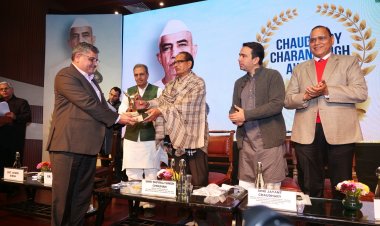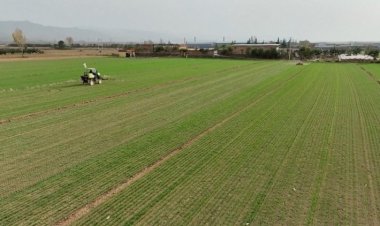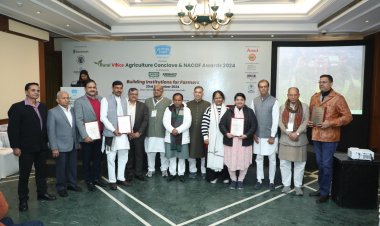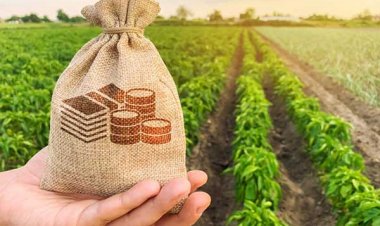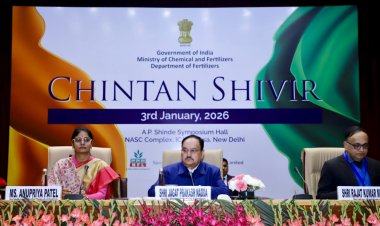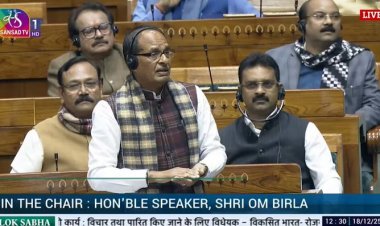Sugarcane farmers get 92.4 per cent payments in Maharashtra for the current season; only 62.29 per cent in UP
As per the data available, as of May 12, 2021, the UP sugar mills have made 62.29 per cent of the total sugarcane price payments due to the farmers while for the Maharashtra sugar mills these figures stood at 92.4 per cent, as of April 30. Besides, the amount of the payments made is also Rs 1,000 crores more than that in UP.

In order to see how the roles of the state governments, of the ownership rights of sugar mills and of the grassroots farmer leaders vary for sugarcane farmers, let us compare the states of Uttar Pradesh (UP) and Maharashtra with regard to cane price payments for the current crushing season 2020-21. RuralVoice had done a story on the afternoon of May 16 on the basis of calculations made with the help of the data available regarding cane price arrears in UP. Which was the first story in this series on cane price payments. RuralVoice now has access to recent data available from the UP government as well as to the data regarding payments made by the Maharashtra sugar mills to the cane farmers till April 30, 2021. Based on these data, we present the second story of the series on the situation of the dues.
As per these data available in the official documents, as of May 12, 2021, the UP sugar mills have made 62.29 per cent of the total sugarcane price payments due to the farmers while for the Maharashtra sugar mills these figures stood at 92.4 per cent as of April 30. Besides, the amount of the payments made is also Rs 1,000 crores more than that in UP. Cane farmers were paid Rs 20,617.05 crores in Maharashtra till April 30 and Rs 19,615.05 crores in UP till May 12.
In Maharashtra, as of April 30, the total sugarcane payments due for the current crushing season was Rs 22,293.34 crores on the basis of the Fair and Remunerative Price (FRP). Of this, payments of Rs 20,617.05 crores were made by the said date — which is 92.4 per cent of the total payments. That leaves arrears of only Rs 1,693.61 crores, which is mere 7.6 per cent of the total payments.
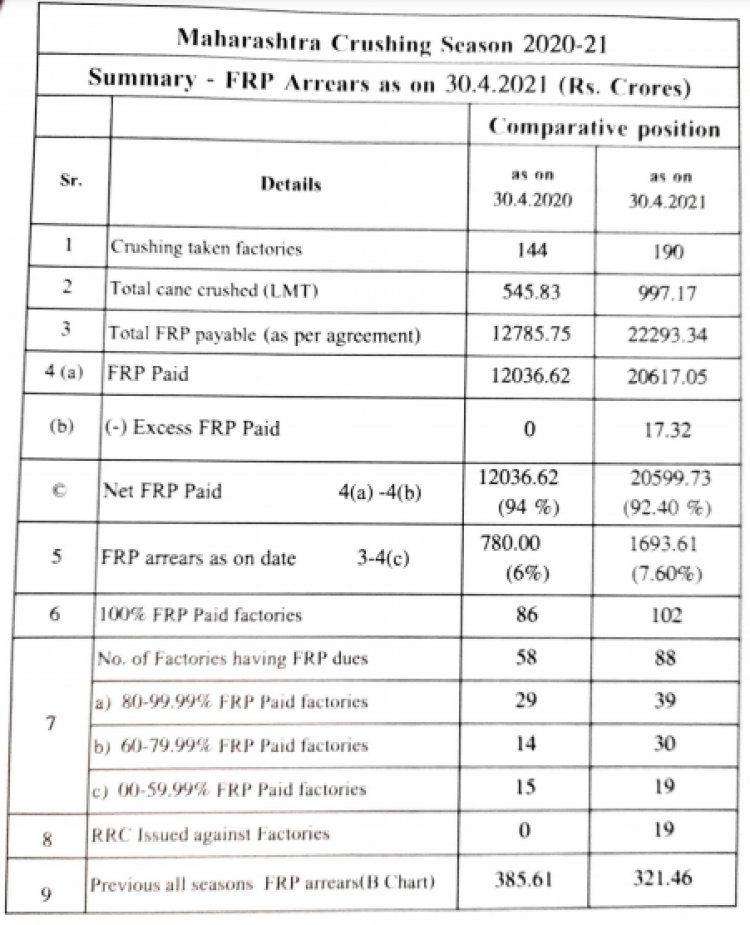
On the other hand, going by the recent documents of the UP government available with RuralVoice, the total sugarcane payments due for the sugar mills of the state was Rs 32,348.66 crores, as of May 12. If we calculate the payments due on the basis of 14 days after the cane supply, this figure comes to Rs 31,487.75 crores. Now, of this, payments of Rs 19,615.05 crores were made to the farmers by the said date. That leaves arrears of Rs 11,872.70 crores. According to the state government, as of May 12, 62.29 per cent of the total payments due have been made while 37.71 per cent remains in arrears.

There are two important points here. One, the total payments made in Maharashtra by April 30 exceeds that in UP by May 12. Even in percentage terms, the level of arrears stands at only 7.6 per cent in Maharashtra. This when the sugar market works in the same way across the country. Rather, the mills in UP get a price higher by Rs 500 per tonne on average as compared to those in Maharashtra. Two, sugar mills of both the states are earning even through exports this year. Besides, the production of Maharashtra last year was almost half of what it has been this year. Which means the revenue of its mills was less. In UP, on the other hand, the production was even greater than what it has been this year.
In Maharashtra, cane farmers get the price on the basis of FRP and the above figures are based on FRP. During the current crushing season, the sugar mills in the state bought 997.17 lakh tonnes of cane till April 30, 2021. Compared to this, they had bought 545.83 lakh tonnes of cane last year during the same period because cane production in the state had gone down drastically last year. Calculating on the basis of what the sugar mills have paid till April 30, the average FRP comes to Rs 223.58 per quintal. But this price is exclusive of harvesting and freight charges, which come to Rs 60 per quintal. Thus, on this basis, cane farmers in the state get a price of Rs 283.58 per quintal.
In UP, on the other hand, cane payments are made on the basis of the State Advised Price (SAP). Which stands at Rs 310, Rs 315 or Rs 325, depending on the variety of sugarcane. The average price comes to around Rs 320 per quintal. But this includes harvesting and freight charges. If we deduct these charges as is the case with Maharashtra, what the farmer gets after deduction comes down to Rs 260 per quintal. In UP, the wages for sugarcane harvesting are Rs 40 to 45 per quintal.
However, the sugar recovery level in Maharashtra is more than that in UP. If we take this into account, the FRP for farmers related to many of the sugar mills there exceeds Rs 300 per quintal.
Raju Shetty, the farmer leader from Maharashtra and Swabhimani Shetkari Sanghatana president, says to RuralVoice, “Our continuous pressure and the priority of the state government are behind the accelerated payments to the cane farmers of the state. We continuously issued recovery certificates against sugar mills that delayed payments and also arranged for sugar auctions together with the DM. The continuous pressure benefited the farmers and they received the payments.” Adds Shetty, “Payments have been made even after April 30 and most of the payments have been made. Only those sugar mills are in arrears which are in poor financial condition.” Many of the sugar mills have made FRP payments of Rs 270 to Rs 300 per quintal. Besides, the cooperative mills even offer bonuses to the farmers at the year-end, which results in a higher final price for the farmers. This difference between private sugar mills and cooperative sugar mills, where farmers have ownership rights, is evident. It is the failure of the UP government that the farmers have not received the payments on time. The condition of the sugar market remains the same for sugar mills across the country and the prices are the same for everyone — the ones prevailing in the market.
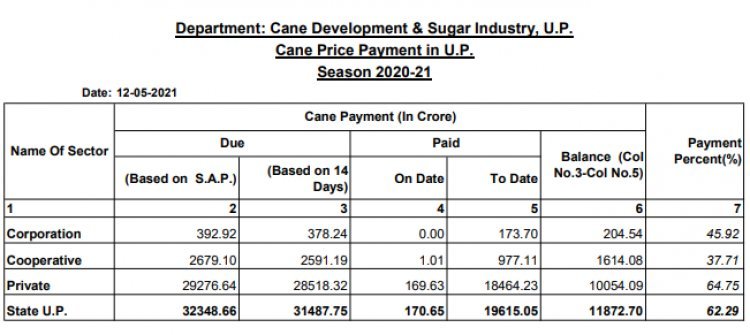
Interestingly, even the sugar mills run by the UP government-owned State Sugar Corporation made only 45.92 per cent of the payments till May 12 while this figure for the cooperative sugar mills run under the state government management stood at 37.71 per cent. Private sugar mills have made 64.75 per cent of the payments. The state government’s own data make it evident that when the government itself is not paying the farmers on time, it will have little moral authority to instruct the private sector to accelerate payments.



 Join the RuralVoice whatsapp group
Join the RuralVoice whatsapp group

















